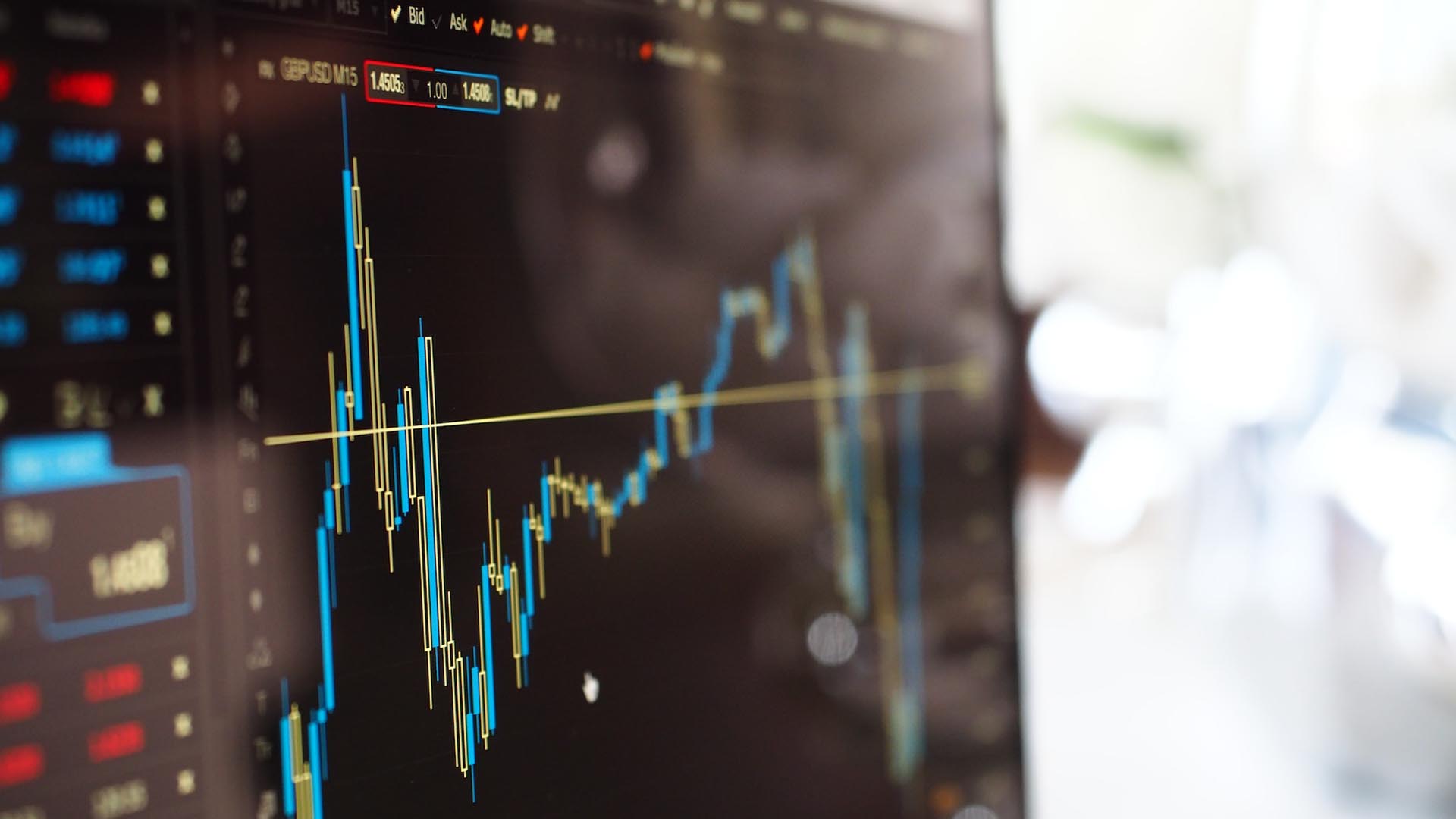|
Getting your Trinity Audio player ready...
|
Have you ever stopped to truly wonder how markets function? What unseen forces set prices, and why do certain products capture our attention while others fade away? Prices act as a communication system in the market, conveying information about the relative scarcity of goods and services. Demystifying market mechanics can unlock profound insights into the very fabric of economics and business.
Markets are not just places where buyers and sellers meet; they are the beating heart of our economy, where countless decisions converge to shape the flow of resources and influence our daily lives. But how well do we really grasp the invisible dynamics that drive these exchanges?
What would it mean for you (as a consumer, producer, or investor) to truly understand how markets operate? Could this knowledge change the way you make decisions, perceive value, or navigate economic complexities?
In this article, we invite you to explore the core principles of market operations. Together, we’ll unravel the mysteries behind economic activity and challenge the assumptions you might hold about the forces shaping our world.
Markets
Markets refer to organized platforms where buyers and sellers engage in the exchange of goods, services, or financial assets, driven by the forces of supply and demand. Equilibrium is the point where the quantity supplied equals the quantity demanded, represented by the market-clearing price.
Fundamentals of Markets
Definition and Function of Markets
Markets are vibrant arenas where buyers and sellers come together to exchange assets, goods, and services, with money serving as the primary medium of exchange. Whether it’s stocks, bonds, commodities, or currencies, money facilitates transactions in markets, driving economic activity and enabling the interaction of supply and demand, which determines prevailing prices and influences the allocation of resources. Innovations can increase productivity and lower production costs, shifting the supply curve.
It’s this ceaseless interplay that fuels economic growth and shapes the financial landscape. In a perfectly competitive market, market mechanisms act as a self-regulating force, directing resources to their most valued uses.
Types of Markets
Markets come in diverse forms, each serving a specific purpose. Primary markets witness initial public offerings (IPOs), where companies raise capital by issuing shares.
Secondary markets, like stock exchanges, enable the trading of existing securities. Specialized markets, such as derivatives and forex markets, cater to intricate financial instruments that allow for risk management and speculative opportunities. Platforms like metatrader 5 have become essential for traders accessing these markets with advanced tools and analytics.
There are also other types of markets, such as over-the-counter (OTC) markets, which operate outside formal exchanges.
Market Participants and Their Roles
Investors and Traders
As an investor, if you’re interested in building wealth over the long term, you make strategic decisions based on fundamental analysis.
If you’re a trader, you focus on shorter time frames, capitalizing on price fluctuations driven by market sentiment and technical analysis. Your actions, along with those of other interested investors and traders, collectively shape market trends and volatility.
Intermediaries and Market Makers
Intermediaries such as brokers, dealers, and market makers act as conduits, facilitating smooth transactions and providing liquidity for you and other market participants. The price system guides producers toward producing the goods and services that consumers desire most, ensuring effective resource allocation.
Market makers, in particular, play a pivotal role in ensuring a stable marketplace by quoting buy and sell prices, thereby narrowing bid-ask spreads. This liquidity injection helps you trade efficiently and supports price discovery.
Market Instruments and Assets
Equities and Stocks
Equities represent ownership stakes in companies, and stocks are the tradable units of these equities. When you place an order to purchase shares, it is matched with a seller through the exchange.
You buy and sell stocks on stock exchanges, where factors like corporate earnings, industry trends, and macroeconomic indicators influence their valuations.
In 2020 alone, the total market capitalization of global stock markets exceeded $95 trillion.
Fixed Income Securities
Fixed-income securities, including government and corporate bonds, play a crucial role in capital markets.
As interest rates fluctuate, bond prices inversely respond, creating opportunities for you to capitalize on yield differentials. The U.S. bond market, for instance, boasts a market size of over $45 trillion.
Commodities and Futures
Commodities such as crude oil, gold, and agricultural products are tangible assets that underpin essential economic activities.
Futures contracts, a cornerstone of commodities markets, allow you to hedge against price fluctuations and speculate on future price movements.
As of 2023, the global commodity market size is estimated to be around $25 trillion, reflecting increased demand and market expansion.
Foreign Exchange (Forex) Market
The forex market is where currencies are traded, forming the bedrock of international trade and finance.
You trade currency pairs, with exchange rates influenced by geopolitical events, economic indicators, and central bank policies. The daily trading volume of the forex market averages around $6.6 trillion.
Understanding Orders and Trades
Navigating the stock market begins with understanding how orders and trades work. When you decide to buy or sell a particular stock, you submit an order to the stock exchange. There are two primary types of orders: market orders and limit orders.
A market order instructs your broker to buy or sell a stock immediately at the current market price, ensuring quick execution but not guaranteeing a specific price. In contrast, a limit order allows you to specify the exact price at which you are willing to buy or sell, providing more control but no certainty that the trade will be executed if the market doesn’t reach the specified price.
Market makers play a crucial role in this process. Acting as intermediaries, they continuously quote both buy and sell prices for stocks, ensuring there is always liquidity in the market. This means you, as an individual investor, can enter or exit positions more easily, even during periods of high market volatility.
The New York Stock Exchange (NYSE) and other major stock exchanges provide the infrastructure for these transactions, efficiently and transparently matching buyers and sellers.

By understanding the mechanics of market orders, limit orders, and the role of market makers, you can develop more effective trading strategies and respond more confidently to market trends and market data.
The Order Book and Market Data
The order book is a fundamental component of stock exchanges, offering you a real-time snapshot of all current buy and sell orders for a particular stock. It acts as a window into the market’s inner workings, displaying the prices and quantities at which traders are willing to transact. The order book is a collection of orders of traders, constructed by matching engines of exchanges.
The order book is organized by price levels, with the highest buy orders (bids) and the lowest sell orders (asks) prominently featured. This structure helps you gauge market sentiment, liquidity, and potential price movements. The order book updates only when new actions by traders are processed or when conditional orders are released.

Market data, which encompasses information such as current prices, trading volumes, and order book activity, is essential for both you and other traders.
There are two main types of market data: Market-by-Price, which aggregates the total size of all orders at each price level, and Market-by-Order, which details individual orders and their changes over time.
By analyzing the order book and market data, you can identify trends, anticipate shifts in supply and demand, and refine your trading strategies.
Understanding the order book and leveraging market data enables you to make more informed decisions, manage risk effectively, and respond proactively to market movements. This insight into market microstructure is invaluable for anyone looking to navigate the complexities of modern stock exchanges.
Exchange Operations
Stock exchanges, such as the New York Stock Exchange (NYSE), are the engines that drive the buying and selling of stocks. Exchange operations are designed to efficiently match buyers and sellers, ensuring that trades are executed fairly and transparently.
When you submit a buy or sell order, the exchange uses sophisticated matching algorithms to pair it with a corresponding order, facilitating seamless trade execution.
Market makers and other intermediaries play a crucial role in exchange operations, providing liquidity and helping to stabilize prices, particularly during periods of market volatility. Their participation ensures that there is always a counterparty for your trades, which is essential for maintaining orderly markets.
Technological advancements have revolutionized exchange operations, enabling faster and more reliable trade execution, reducing transaction costs, and increasing accessibility for market participants like you.
By understanding how exchanges operate, including the roles of market makers and the impact of technological innovations, you can better navigate the stock market. This knowledge helps you to make informed decisions, adapt to changing market conditions, and refine your trading strategies in a dynamic environment.
Market Efficiency and Pricing
Efficient Market Hypothesis (EMH)
The concept of market efficiency posits that prices reflect all available information. The Efficient Market Hypothesis (EMH) comes in three forms: weak, semi-strong, and strong. While the hypothesis has its proponents and critics, understanding its implications is essential for you as a business professional navigating the markets.
Fundamental Analysis
Fundamental analysis involves examining a company’s financial statements, industry trends, and economic indicators to determine its intrinsic value.
The process involves dissecting financial statements, analyzing key ratios, and assessing growth prospects. This information guides your investment decisions and helps identify assets that are undervalued or overvalued.
Technical Analysis
Technical analysis relies on historical price and volume data to forecast future price movements. It involves studying chart patterns, trends, and indicators to identify potential entry and exit points.
While some view technical analysis skeptically, it’s a widely used approach that emphasizes timing and market sentiment.

Market Volatility and Risk Management
Understanding Volatility
Market volatility, characterized by price fluctuations, is a constant companion in financial markets. A significant lack of liquidity can forecast increased market volatility.
Factors such as economic releases, geopolitical events, and unexpected news can trigger swift market movements. Acknowledging volatility’s presence is vital for you as a risk-conscious investor.
Risk Management Strategies
Navigating markets necessitates risk management strategies that safeguard your investments. Diversification (spreading investments across different assets) is a cardinal rule.
Asset allocation, hedging, and position sizing are tools that help you manage risk exposure and optimize potential returns.
Short Selling and Its Mechanics
Short selling is a unique trading strategy that allows you to profit from a decline in a stock’s price. The process begins when you borrow shares of a stock from a broker and sell them at the current market price.
If the stock price falls, you can repurchase the shares at the lower price, return them to the broker, and pocket the difference as profit. However, if the stock price rises instead, you face potentially unlimited losses, making risk management essential.
Short selling can increase selling pressure on a stock, influencing market microstructure and contributing to price movements. While it is often used by traders to speculate on falling stock prices, it can also serve as a risk management tool, allowing you to hedge against potential losses in your portfolio.
Understanding the mechanics and risks of short selling is crucial for you as an investor or trader. While it offers opportunities to take advantage of declining markets, it also requires careful consideration of market price dynamics, stock prices, and overall risk exposure.
Market Regulation and Oversight
Regulatory Bodies and Frameworks
Financial markets are subject to regulatory oversight to ensure fair practices and protect investors like you. Key regulatory bodies like the U.S. Securities and Exchange Commission (SEC) and the Financial Conduct Authority (FCA) play vital roles in maintaining market integrity.

Market Disruptions and Circuit Breakers
To prevent market crashes triggered by extreme volatility, circuit breakers halt trading temporarily. These mechanisms provide a breather for you and other market participants to assess the situation before trading resumes.
Latency and Its Impact on Trading
Latency, the time delay between submitting an order and its execution, plays a significant role in modern trading. In fast-moving markets, even milliseconds can make a difference in the price at which your trade is executed.
High-frequency traders (HFTs) and other market participants who rely on rapid trade execution are particularly sensitive to latency, as it can impact their ability to capitalize on market trends and market data.
Technological advancements, such as high-speed trading platforms and co-location services (where servers can be physically placed close to the exchange), have significantly reduced latency, giving some traders a competitive advantage. However, not all investors have access to these technologies, and those using slower platforms may experience slippage, where the executed price differs from the intended price.
Understanding latency and its effects enables you to develop strategies that minimize its impact. By choosing the right brokers, leveraging technological advancements, and staying informed about market trends, you can optimize trade execution and make more informed decisions in a highly competitive market environment.
Future Trends and Technological Innovations
Impact of Technology
Technology, from algorithmic trading to high-frequency trading, has revolutionized market operations. Algorithmic trading, which accounts for a significant portion of market volume, executes trades at lightning speed based on pre-set rules.
Evolving Market Structures
Electronic trading platforms and dark pools are reshaping market structures. These innovations offer advantages such as reduced trading costs and enhanced anonymity but also pose challenges related to transparency and market access.
Navigate The Market
With a solid grasp of market mechanics, you are better equipped to navigate the complex financial landscape with greater confidence and insight. Markets are dynamic arenas where economic forces converge, setting prices through the continuous interaction of buyers and sellers.
Understanding the roles of market participants, including market makers, and the impact of orders (whether market buy orders or limit orders with specified prices) enables you to anticipate market movements and manage risk effectively.
As a business professional or investor, leveraging knowledge of market microstructure, order books, and market data empowers you to make informed decisions that go beyond mere speculation. By recognizing how sell pressure, liquidity, and volatility influence price trends, and by staying aware of regulatory frameworks and technological advancements, you can develop strategies that take advantage of market opportunities while mitigating risks.
Embrace the power of understanding market mechanics to guide your investment journey, refine your trade execution, and adapt to ever-evolving market conditions. This knowledge is your key to unlocking value and achieving success in today’s fast-paced and intricate markets.
Frequently Asked Questions (FAQ)
What are market mechanics?
Market mechanics refer to the fundamental components and processes that govern how markets operate, including how orders are placed, matched, and executed, and how prices are determined through the interaction of buyers and sellers.
How do market orders differ from limit orders?
A market order is an instruction to buy or sell immediately at the current market price, ensuring quick execution but not a specific price. A limit order specifies the highest price a buyer is willing to pay or the lowest price a seller is willing to accept, providing price control but no guarantee of execution.
What role do market makers play in the market?
Market makers provide liquidity by continuously quoting buy and sell prices for stocks, helping to narrow bid-ask spreads and ensure smoother trade execution, especially during periods of market volatility.
How does the order book influence price movement?
The order book displays all current buy and sell orders at various price levels. Price movement occurs when market orders consume liquidity at these levels, breaking through floors or ceilings of limit orders, which can lead to changes in the best bid and ask prices. The order book consists of all pending buy and sell orders for a particular stock, indicating supply and demand.
Can individual investors trade directly on stock exchanges?
Typically, individual investors cannot trade directly on stock exchanges; they place orders through brokers who have access to these exchanges.
What is the importance of understanding market mechanics?
Understanding market mechanics enables investors and traders to make informed decisions, manage risk effectively, and develop strategies that capitalize on market trends and price movements.
How does short selling work?
Short selling involves borrowing shares to sell at the current market price with the intention of repurchasing them later at a lower price, thereby profiting from a decline in the stock’s price. However, it carries a significant risk if the price rises instead.
What is latency in trading, and why does it matter?
Latency is the delay between submitting an order and its execution. Lower latency can provide a competitive advantage in fast-moving markets by enabling quicker trade execution and better prices.
How do technological advancements affect market mechanics?
Technological advancements, such as high-frequency trading and electronic platforms, have increased market efficiency, reduced transaction costs, and changed the dynamics of trade execution and market data dissemination.
What safeguards exist to prevent extreme market disruptions?
Mechanisms like circuit breakers temporarily halt trading during periods of extreme volatility to allow market participants to assess conditions and prevent panic selling or buying.


